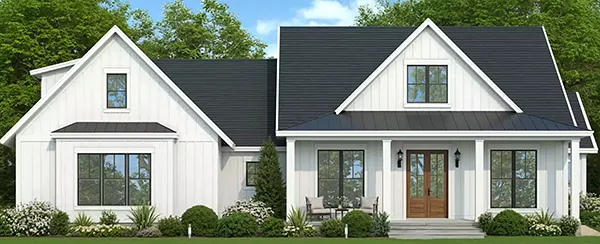Insulating Your Home
 It may seem like an uninteresting product selection, but insulation is a critical material in determining your home's energy efficiency and the amount of money you'll end up spending for cooling and heating. When properly and adequately installed in your floors, walls and ceilings, this relatively cheap product is maintenance free and quietly does its job for the life of your home.
It may seem like an uninteresting product selection, but insulation is a critical material in determining your home's energy efficiency and the amount of money you'll end up spending for cooling and heating. When properly and adequately installed in your floors, walls and ceilings, this relatively cheap product is maintenance free and quietly does its job for the life of your home.
Choosing the right insulation material for your home depends on where it will be used and the building and energy codes for your particular town. Your contractor can help you choose the best options for your needs.
Here is some useful information to help you determine which insulation is right for your new home:
How Insulation Works
Insulation works by slowing the flow of heat trying to leave your home by making it jump across million of tiny air spaces. The smaller and more plentiful the air spaces, the better the insulation. Your home easily loses heat to the outside air through radiation and conduction, which moves the heat from a warm area to colder area - basically from your heated house to the outdoors. Heat is also lost through air leaks - those hidden holes and cracks in your home.
Types of Insulation
Builders have many choices for the types of insulation they use. All insulation can be effective if it is properly installed and coupled with a continuous air barrier. Insulation materials are rated according to their ability to resist heat flow. This thermal resistance rating is commonly known as an "R-value." The higher the R-value, the better the material is at resisting heat flow. When building a new home it is worth taking the time to ensure your builder follows the guidelines for insulation set forth by ENERGY STAR® which meets or exceeds the national code requirements.
ENERGY STAR® qualified homes can include one or more of the following types of insulation:
- Batt Insulation: Batt insulation is typically made from mineral fiber (fiberglass or rock wool) and manufactured in blankets of various sizes and thicknesses. Batt insulation is typically fitted between studs, joists, and beams and should fill the wall, floor, or ceiling cavity without any gaps, voids, or compression.
- Blown-in Insulation: This type of insulation is usually made from fiberglass or cellulose and is literally blown into the walls and attic through a large hose. Blown-in insulation should completely fill the wall cavities and be an even thickness throughout the attic.
- Sprayed or Injected Foam Products: These types of products are typically made from polyurethane or similar products and are injected or sprayed into cavities where they expand to the desired thickness.
- Rigid Insulation: This synthetic insulation is typically made from polystyrene and polyurethane foam, which is expanded or formed into large sheets. Rigid insulation can be used to provide a continuous thermal barrier in basements, crawlspaces, and on exterior walls. This product is also available by certain manufacturers as a spray-on expanding foam, which when applied expands to double its size, making it a great product for filling in nooks and crannies.
Eco-Insulation Products:
- Cotton Fiber: Recycled cotton fiber consists of a batted material, usually denim, which has been treated with the chemical borate to make it fire and heat retardant and to prevent it from developing mold. Since the material does not off-gas and is non-toxic in doesn't require warning labels.
- Cellulose: Cellulose insulation is made from finely shredded newsprint and contains 85 percent recycled content. It is chemically treated with non-toxic substances to reduce mold and promote fire resistance. It can reduce heating and air conditioning bills by up to 20 percent annually.



.png)
.png)
 It may seem like an uninteresting product selection, but insulation is a critical material in determining your home's energy efficiency and the amount of money you'll end up spending for cooling and heating. When properly and adequately installed in your floors, walls and ceilings, this relatively cheap product is maintenance free and quietly does its job for the life of your home.
It may seem like an uninteresting product selection, but insulation is a critical material in determining your home's energy efficiency and the amount of money you'll end up spending for cooling and heating. When properly and adequately installed in your floors, walls and ceilings, this relatively cheap product is maintenance free and quietly does its job for the life of your home. 
